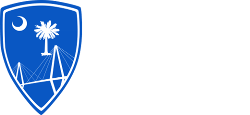Over the past few years, demand for access control in Charleston and South Carolina has skyrocketed. It’s no wonder why this has occurred locally, with global electronic access control system markets approaching 31 billion in total estimated value.
With increased demand for card and door access control systems, comes increase demand for knowledge about how they work. Many people are unsure of the components they need in order for a system to work properly; we’re here to help.
Access control systems are broken down into the following components: Access Cards/Keyfobs, Card Readers, Access Control Keypads (optional or in-place of card readers), Electric Locks, Access Control Panels and finally the Access Control Server Computer.
Access Cards/Keyfobs
Most people are familiar with access cards and/or keyfobs — whether it was at your local gym or an entrance to an apartment/condo complex; these are the electronic “keys” to gain access to specific area.
Coming in a variety of shapes and sizes, access control keycards are individually encoded with information related with the particular user that is entrusted with it, allowing (or not allowing) that user access priveledges to a particular area.
Card Readers
Card readers are the devices that detect and read the access cards when placed inside or near the reader. They are mounted on the non-secure side of the door or gate that the access system controls.
Oftentimes it will be simple, flat surface device that a keycard will only have to be in proximity of (typically 3 to 6 inches away) to send a signal that the user of that keycard has (or does not have) access priveledges.
Access Control Keypads (Optional or In-Place of Card Readers)
Access keypads have numeric keys that allow users to enter in a multi-digit code in order to enter a particular area.
There are also combo proximity/keypad card readers that allow users to use either or both a keycard and a numeric code.
Electric Locks
Electric locks are the hardware used to physically lock/unlock the doors that are being controlled by the system.
These locks come in a variety of shapes and sizes depending on the door type but have the same function regardless.
Access Control Panels & Server
The access control panel and is the place where all the previous devices are connected and the access control logic is stored. The server holds the primary database for the entire control system and records all of the events within the system.
The server also holds all of the scheduling so that access to your facility can be time dependent — allowing you to always know who should/shouldn’t be in your restricted areas.
Although electronic access control system and their components may seem complicated, we’re here to help you find the right access and security system to fit your specific needs and answer any questions you may have.




